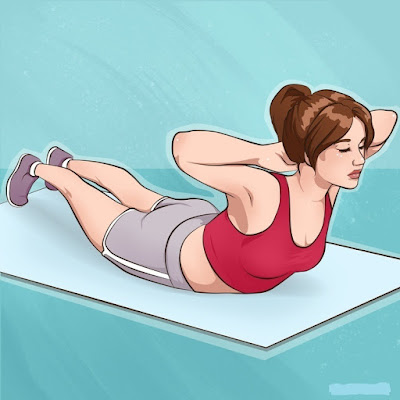THIS IS HOW HEADACHES REVEAL WHAT IS WRONG WITH YOUR HEALTH

Headache is the most common form of pain. It’s one of the main reason people miss days at work or school or visit the doctor .
In fact, the National Headache Foundation estimates that 28 million Americans suffer from migraines alone .
Because headaches have so many different causes, from the cold to premenstrual syndrome, it can be difficult for sufferers to understand what kind of headache they are experiencing and how to manage their condition.
TYPES OF HEADACHES
The most common headaches are caused by either vascular problems (high blood pressure, toxic overload, etc.), muscle contractions (tension, stress, etc) and inflammation (infection) .
1. TMJ HEADACHE
A TMJ (Temporomandibular Joint) headache is caused by problems with the jaw, jaw joint and lower facial muscles. This can be due to teeth grinding or clenching, tension in the jaw, dislocation of the jaw joint and arthritis.
This pain doesn’t just occur in the jaw, it can also spread upwards towards the cheeks, temples and ears or downwards to the neck and shoulder .
2. SINUS HEADACHE
As its name implies, a sinus headache occurs when sinuses become inflamed or blocked. This can cause pain behind the cheeks, nose and eyes that gets worse when your bend forward or when you wake up.
Common causes include allergic reaction, a tumor, or an infection. Depending on its underlying cause, symptoms can closely resemble those of a migraine .
3. CLUSTER HEADACHE
A cluster headache is a sharp, very painful headache that occurs on and off several times a day for months followed by headache-free periods lasting up to 6 months.
The pain arrives with little warning and typically affects only one side of the head, often accompanied by a bloodshot eye and runny nose.
Commonly affected areas include above the eye and near the temples. These headaches typically last less than an hour and came about at the same time everyday.
4. TENSION HEADACHE
This type is typically caused by stress and anxiety. As muscles tighten in you shoulders, neck and jaw, the headache tends to cause pressure, pulling and contractions that affect your temples, face and scalp.
It can also last between a few minutes to a few days. Triggers include lack of sleep, missed meals, stressful situations, high emotions and alcohol.
5. NECK HEADACHE
Also called a cervicogenic headache, neck headaches don’t actually affect your head. However, even thought the pain occurs in your neck and shoulder blades, you may perceive it as originating in the back of your head or at the base of your skull.
The best way to get relief is to fix the underlying cause, whether it’s a pinched nerve, muscle knots, muscles damage, abnormal bone growths, tumours, tissue swelling and joint problems. Relief can be found through massage, acupuncture, physiotherapy and chiropractic treatment .
6. MIGRAINE
Migraines are severe throbbing or a pulsing sensations that are often accompanied by nausea, vomiting, and sensitivity to light and noise. These often occur anywhere for minutes to hours at a time.
Some people may experience visual hallucinations like an “aura”, dots or flashing lights, disruptions in smell, touch and taste or numbness. After they subside, migraines often leave the sufferer feeling tired or unable to concentrate .
WHEN TO TALK TO YOU DOCTOR
According to the Nation Health Institute, a headache can be a sign of something more serious, such as:
Bleeding in the area between the brain and the thin tissue that covers the brain
High blood pressure
Brain infection, such as meningitis or encephalitis, or abscess
Brain tumor
Buildup of fluid inside the skull that leads to brain swelling (hydrocephalus)
Buildup of pressure inside the skull that appears to be, but is not a tumor (pseudomotor cerebri)
Carbon monoxide poisoning
Sleep apnea
Problems with the blood vessels and bleeding in the brain, such as arteriovenous malformation (AVM), brain aneurysm, or stroke
If you experience any of the symptoms listed bellow, seek medical assistance immediately:
Your headache comes on suddenly and is explosive or violent.
Your headache is “the worst ever,” even if you regularly get headaches.
You also have slurred speech, a change in vision, problems moving your arms or legs, loss of balance, confusion, or memory loss with your headache.
Your headache gets worse over 24 hours.
You also have a fever, stiff neck, nausea, and vomiting with your headache.
Your headache occurs with a head injury.
Your headache is severe and just in one eye, with redness in that eye.
You just started getting headaches, especially if you are older than 50.
Your headaches are associated with vision problems, pain while chewing, or weight loss.
You have a history of cancer or immune system problem (such as HIV/AIDS) and develop a new headache.
HOME REMEDIES
While most people rely on headache medication to get through a bad migraine, these drugs can actually cause “rebound headaches”, which means that regular use of these medication can actually begin to trigger headaches.
If you suffer from chronic headaches, here are a few natural solutions that will provide you with lasting relief:
Himalayan salt
Ginger tea
Lavender lemonade
Vitamin B2
Magnesium
You may also benefit from drinking a tall glass of water and resting in a quiet, dark room with a cool cloth on your head.
As far as prevention goes, keep a headache diary to track potential triggers. Make sure to write the time and day when your pain began and ended, what you ate and drank int he 24 hours before your symptoms, how much you slept the night before and what your were doing and thinking when the pain began.
This will help you identify you headache patterns and help you manage and predict future headaches.
loading...


